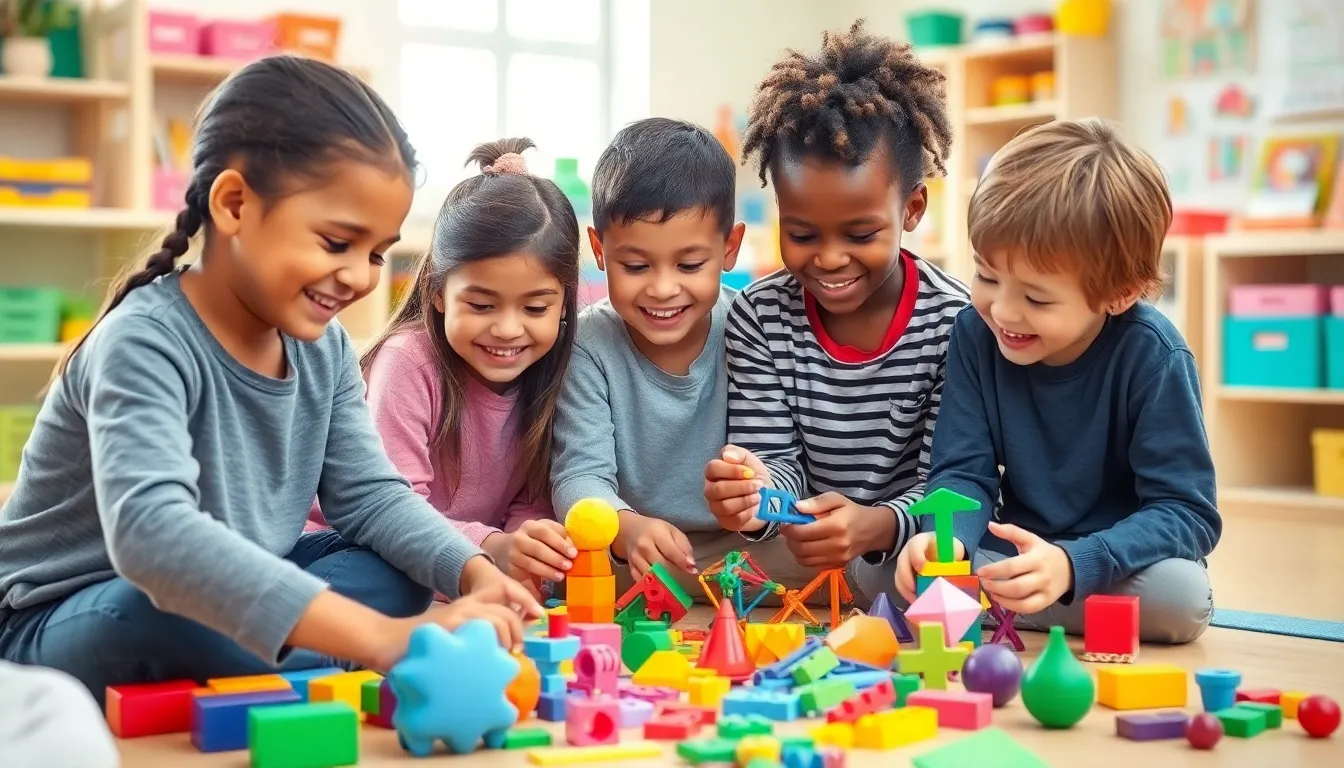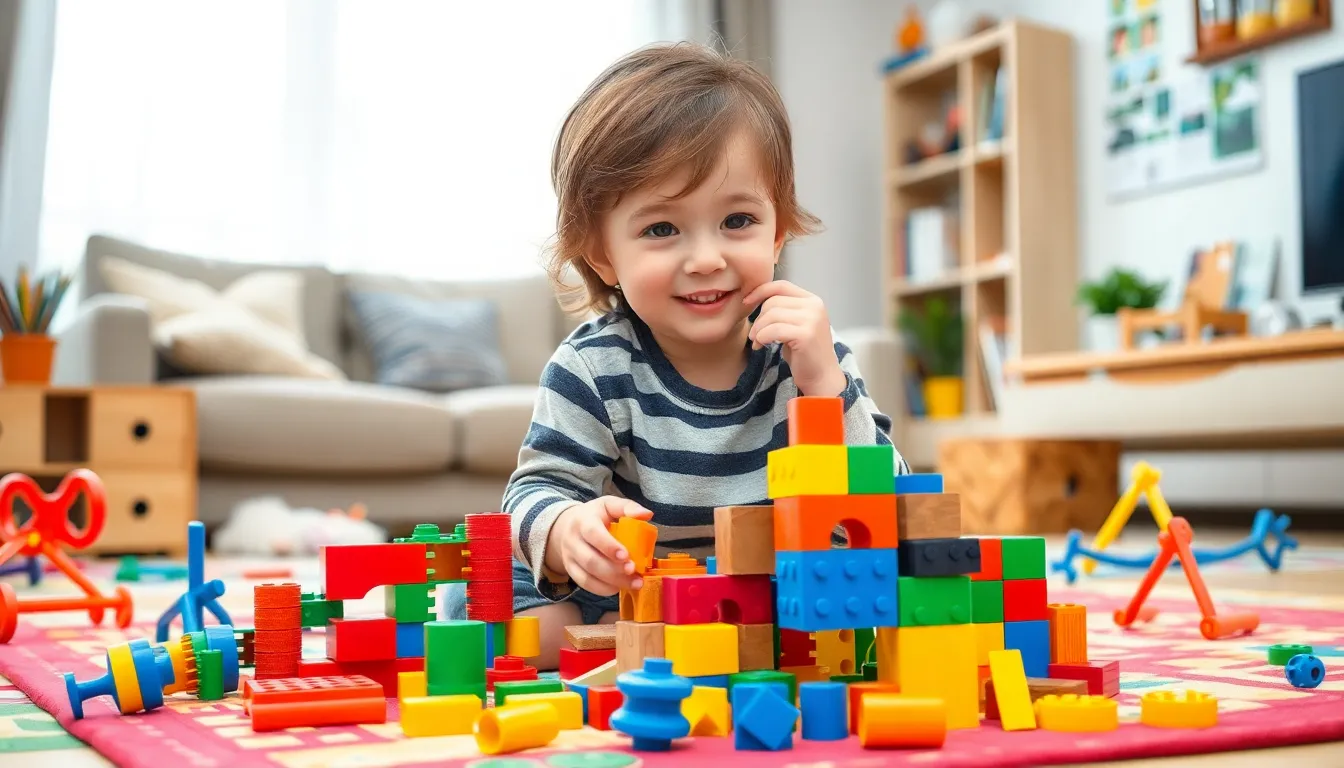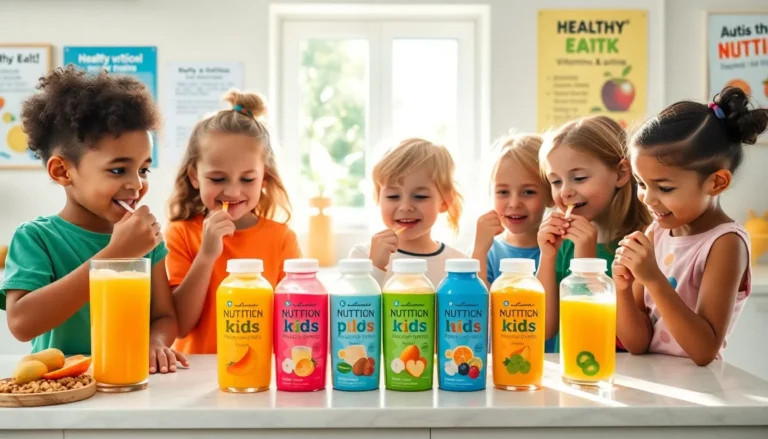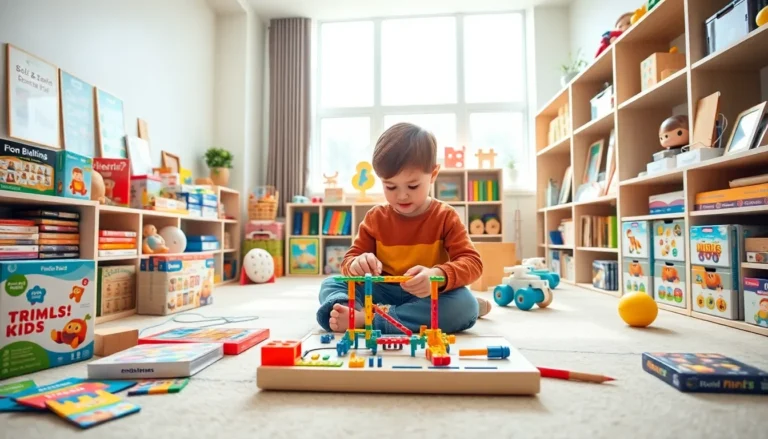In a world buzzing with screens and distractions, critical thinking toys are the unsung heroes of childhood development. These clever little gadgets don’t just entertain; they challenge young minds to think outside the box and solve problems like mini Einsteins. Imagine a toy that’s not only fun but also a brain workout—who wouldn’t want that?
Table of Contents
ToggleOverview of Critical Thinking Toys
Critical thinking toys stimulate a child’s mind through engaging, hands-on activities. These toys include puzzles, building sets, and brain teasers designed to challenge problem-solving capabilities. Flexible materials, like blocks or magnetic tiles, facilitate creative exploration and experimentation.
Educational benefits of critical thinking toys extend beyond mere entertainment. Cognitive skills such as logic, reasoning, and spatial awareness develop naturally through play. Children grasp concepts like cause and effect when constructing models or solving complex puzzles.
Various types of critical thinking toys cater to different age groups and interests. For instance, STEM (Science, Technology, Engineering, Math) toys encourage scientific inquiry and experimentation. Arts and crafts materials foster creative thinking while enhancing fine motor skills.
Parents often find value in these toys for their ability to promote independent thinking. When children encounter challenges presented by these toys, they learn persistence and resilience. Collaborative play also enhances social skills, as children negotiate solutions and share ideas.
Research supports the idea that interactive play boosts cognitive development. Studies show that children engaged with critical thinking toys exhibit improved academic performance and enhanced problem-solving abilities. By incorporating these toys into playtime, caregivers actively support the growth of essential life skills.
Benefits of Critical Thinking Toys

Critical thinking toys offer numerous benefits for children’s development. They create opportunities for cognitive engagement that enhance overall learning.
Enhancing Problem-Solving Skills
Critical thinking toys actively challenge children to find solutions. Engaging with puzzles and building sets encourages logical reasoning. Such activities enable children to analyze problems from different angles. Research highlights that children who frequently engage with these toys exhibit stronger problem-solving skills. They learn to approach challenges with persistence, developing resilience as they overcome obstacles. Additionally, hands-on experiences help children grasp abstract concepts more effectively. These skills become essential as they navigate academic and life challenges.
Fostering Creativity and Innovation
These toys inspire creativity through open-ended play. Artistic materials and construction sets allow children to express themselves freely. Creative exploration enhances divergent thinking, expanding their imaginative capabilities. Engaging in these activities can foster innovation, as children learn to envision multiple possibilities. Moreover, integrating critical thinking toys into playtime promotes experimentation with ideas. Children gain confidence in their creative choices through this exploration. Overall, fostering creativity through play encourages innovative problem-solving in various contexts.
Types of Critical Thinking Toys
Critical thinking toys come in various forms, each designed to enhance different cognitive skills. These toys engage children in fun and interactive ways, promoting their ability to think critically and creatively.
Puzzle and Strategy Games
Puzzle and strategy games challenge children’s problem-solving abilities effectively. These games require logical reasoning, patience, and foresight. Popular options include jigsaw puzzles, chess, and Sudoku. Engaging with these games often encourages children to think several steps ahead. By doing so, children learn to approach challenges methodically, practicing critical thinking in enjoyable settings.
Building and Construction Sets
Building and construction sets stimulate creativity and spatial awareness. These sets, such as LEGO and magnetic tiles, allow children to create structures based on their imagination. Furthermore, they promote teamwork and shared problem-solving during construction activities. Children frequently learn about balance and stability as they experiment with different designs. Engaging with these types of toys also fosters an understanding of basic engineering principles, laying the groundwork for future scientific inquiry.
Top Critical Thinking Toys on the Market
Many excellent critical thinking toys engage children while promoting vital cognitive skills. Below are some popular options that stand out for their effectiveness and versatility.
Detailed Reviews of Popular Options
LEGO building sets encourage creativity and critical thinking. Children construct unique models, enhancing spatial awareness and problem-solving abilities. ThinkFun’s Gravity Maze combines engineering with logic skills, as players navigate marbles through maze challenges. Similarly, Osmo kits offer interactive learning experiences, blending physical and digital play. Also, Rush Hour challenges critical thinking through traffic puzzle scenarios, requiring strategic planning to advance. Each toy captivates young minds, making learning fun while fostering essential skills.
Comparison of Features and Benefits
Different toys offer unique features that enhance learning experiences. LEGO sets emphasize open-ended building, allowing creative expression alongside problem-solving. ThinkFun’s games focus on logic, providing structured challenges that develop reasoning skills. Osmo kits integrate technology, enhancing educational engagement through interactive gameplay. In contrast, Rush Hour promotes strategic thinking in a time-sensitive context. Each toy not only entertains but also prepares children for academic and real-world challenges.
Recommendations for Parents and Educators
Choosing critical thinking toys involves considering multiple factors that align with a child’s interests and developmental stage. Opt for toys that challenge problem-solving abilities and encourage creativity. Look for puzzles or strategy games, as these foster logical reasoning and analytical thinking.
Select building and construction sets that stimulate spatial awareness and innovation. Products like LEGO or magnetic tiles not only engage children but also promote collaborative play, enhancing social skills through teamwork. Incorporate a variety of interactive toys, which can include brain teasers alongside technological kits like Osmo, to cater to diverse learning preferences.
Observe children as they engage with these toys. Monitoring their interactions allows parents and educators to witness their problem-solving processes and critical thinking development. Engage in play alongside them to facilitate discussions that broaden their understanding and help them articulate their thought processes.
Create an inviting environment for exploration and learning. Encouraging open-ended play gives children opportunities to experiment and innovate without fear of failure. This supportive atmosphere nurtures resilience and persistence in facing challenges.
Integrate critical thinking toys into structured learning activities. Align these toys with educational objectives in subjects like math, science, or art to enhance overall learning experiences. Selecting toys that bridge critical thinking with specific academic content can boost both enjoyment and educational outcomes.
Encourage children to explain their thought processes while solving challenges. Verbalizing their reasoning reinforces their cognitive skills and helps develop communication abilities. Utilize these engaging toys to cultivate a lifelong love for learning and problem-solving.
Critical thinking toys offer invaluable opportunities for children to develop essential cognitive skills. By engaging with these toys, kids not only enhance their problem-solving abilities but also foster creativity and independent thinking. The diverse range of toys available caters to various interests and age groups, ensuring that every child can find something that resonates with them.
Incorporating critical thinking toys into playtime transforms learning into an enjoyable experience. As children navigate challenges through interactive play, they build resilience and confidence. Parents and educators play a crucial role in guiding this exploration, creating an environment that nurtures curiosity and critical thought. Embracing these tools can significantly influence a child’s academic journey and overall growth.





